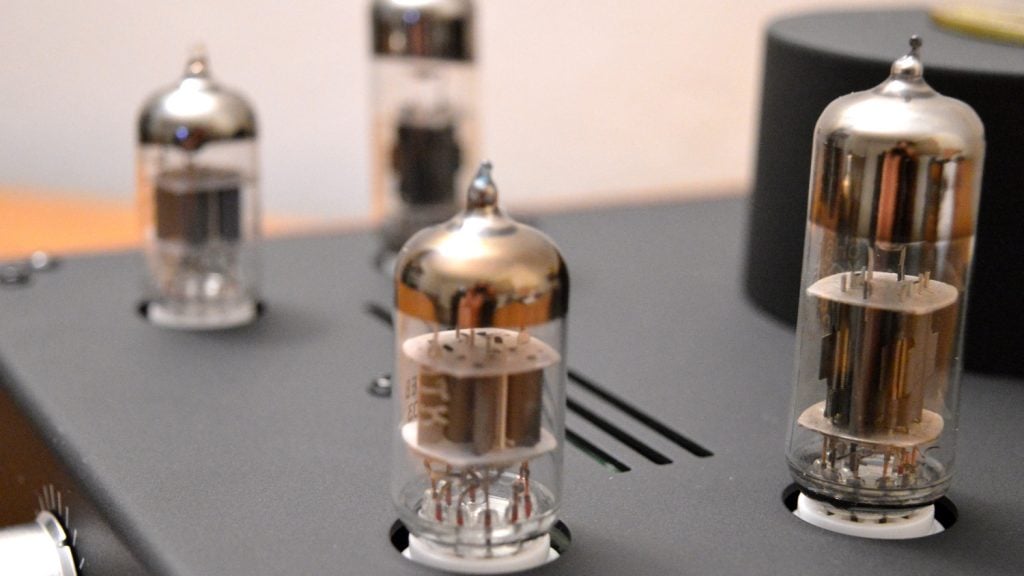Most of us are fine with simply plugging our headphones into our phone or computer, and listening away. For the audiophiles among us, however, sometimes a little extra is needed. That’s where the headphone amp comes in. But what is a headphone amp? And do you need a headphone amp?
If you’re asking yourself those questions, you’ve come to the right place.
What is a headphone amp?
A headphone amp, or headphone amplifier, basically does what the name implies — it amplifies sound. In fact, without one, you wouldn’t be able to hear sound through your headphones at all — it would simply be too tiny of a signal for your human ears to hear.
What that means is that everything you listen to music on has a headphone amp — every smartphone, every tablet, and every computer generally has a headphone amplifier built right into it, ensuring that music can be played loud enough for you to hear.
So what’s the point? Well, the tiny little amplifier in your smartphone generally isn’t the best quality around — often, a signal starts distorting without even getting that loud. The overall point of an external headphone amplifier is to bring enough power to a signal so that it can remain undistorted at its musical peak — not to make a signal so loud that you go deaf. By increasing the volume at which a signal distorts, your normal listening volume will be cleaner at its loudest points. For that reason, technically you can use a headphone amp with your smartphone. If the volume coming from your smartphone is quiet, it can be boosted cleanly by the external headphone amp rather than the internal one.
So now you know what a headphone amp is, but how does a headphone amp work?
How does a headphone amp work?
As is the case with any electronic sound equipment, headphone amps are all about electric current. During the process of amplification, there are two signals generated — called the input signal and the output signal. Those two signals are completely different from each other — but the output signal is basically a much louder version of the input signal.
All amplifiers are built up from three main components — an input, a multiplication factor of some kind that increases the signal flowing into the input, and an output, which changes the signal into something headphones or speakers can understand. There are, however, different kinds of amplifiers, and in those different kinds, it’s the multiplication factor that changes. Here’s a rundown of the different kinds of amplifiers and how they work.
The transistor amplifier
The transistor amplifier is by far the most common kind of amplifier out there, and as the name implies, it uses a transistor as the active “amplifying” part.
Transistors themselves are made up of different kinds of silicon. Silicon itself isn’t very good at conducting a current, but silicon can be manipulated with different elements to either be positively or negatively charged. Transistors are made up of a kind of silicon sandwich, with three layers of silicon — two negatively charged outer layers, and one positively charged inner layer. In a negatively charged layer, there are extra electrons that can conduct electricity, while in a positively charged layer, there are holes where electrons could go. Transistors also have a base electrode, which is where it draws power from — power that comes from the power source of the amplifier. That first negative layer is called an emitter, while the middle positive layer is called a base, and the third layer, which is also negatively charged, is called a collector.
As mentioned, there are two other parts to a headphone amp — in this case, the input circuit is connected to the emitter and the base, while the output circuit is connected to the emitter and the collector
Because of how electrons work, the free ones in the n-type layers naturally want to flow over to the holes in the p-type layer. Problem is there are way more electrons than holes, so those holes fill up quickly and “depletion” zones are created — where the different layers can’t really conduct electricity very well.
When those depletion zones thicken up, the voltage is boosted from the base — voltage that’s controlled by the input current. When there is an input, the base electrode carries a positive charge, so some electrons flow towards it from the emitter, shrinking some depletion zones. What that does is help make the transistor more conductive — and the higher voltage at the base, the more conductive it gets thanks to the movement of those electrons. That way, a current can be boosted depending on the input current at the base, amplifying the signal, and driving the speaker.
In most cases, amplifiers have a number of different transistors — so the signal will be amplified multiple times before being delivered to your headphones.
The tube amplifier
Tube amps, like the Feliks Audio Espressivo, works quite similarly to the transistor amp in that it has three stages — an input, a multiplication stage, and an output. The difference between a tube amp and a transistor amp, however, is that instead of using transistors, the tube amp uses vacuum tubes — or small tubes in which there’s a vacuum.
The basic concept is that a heated “cathode” burns off electrons from a filament — similar to a light bulb, except that in a vacuum tube has either thorium added to it or is oxide-coated. In either case, when the filament is heated up, it emits electrons, and those electrons fall off the filament and pass into a grid, which controls a current. Using those electrons, the current — which is a representation of the input — is amplified, before being sent to the output. Like a transistor amplifier, tube amps often pass the current through multiple stages.
Should I get a headphone amplifier?
It can sometimes be unclear as to what the connection is between a pair of headphones and a headphone amp. There are a few reasons why one might want a headphone amp — and they have to do with both audio quality and simply having enough power.
One of the easiest ways to tell whether your headphones could use an amp or not is their impedance, which is represented in ohms (Ω). Headphones with a higher impedance require a little more voltage to produce the same amount of volume compared to headphones with a lower impedance. In general, headphones with a higher impedance than 32Ω could benefit from a headphone amp, but it’s not until around 90 or 100Ω that you need a headphone amp.
Of course, as mentioned, a headphone amp can also improve quality. As highlighted before, a headphone amp can be used with a smartphone or computer, however considering headphone amps are getting better and better most people won’t be able to tell the difference between using a headphone amp and not using one. In other words, the answer to the question in the title is generally “no.” You don’t need a headphone amp unless you’re an audiophile who only wants a superior audio quality.
Conclusions
If you’ve made it this far into the article, then you now have a much getter understanding of what headphone amps are, how they work, and whether you need one or not.




